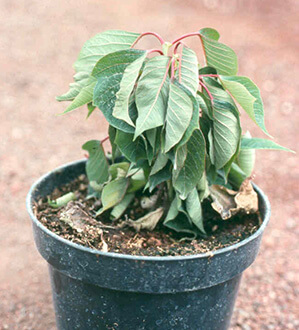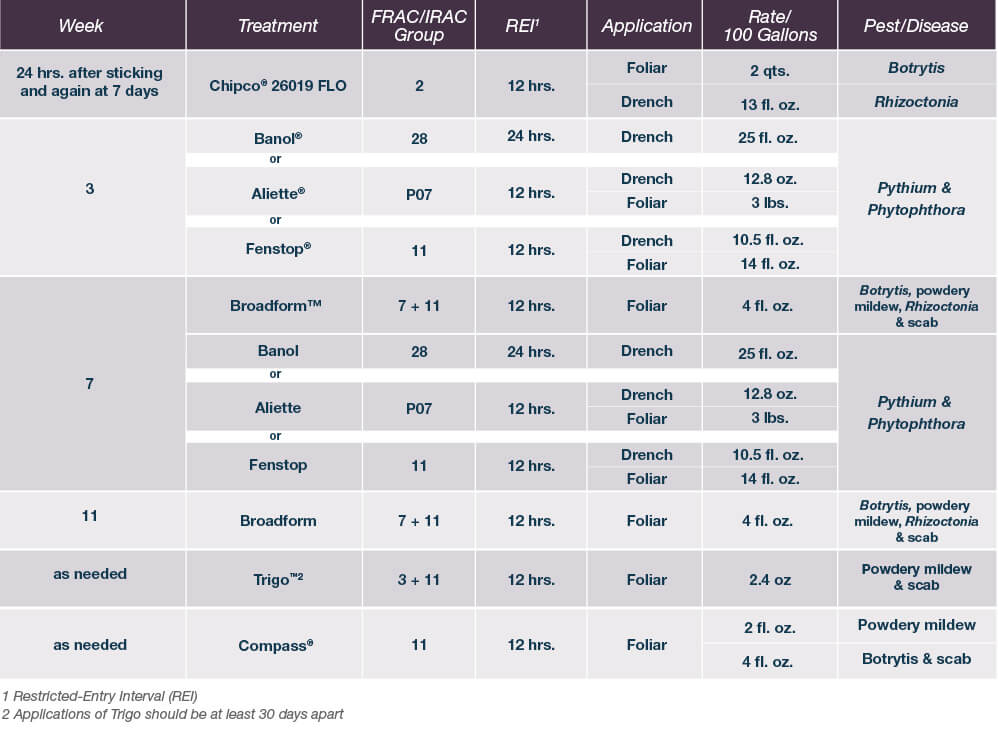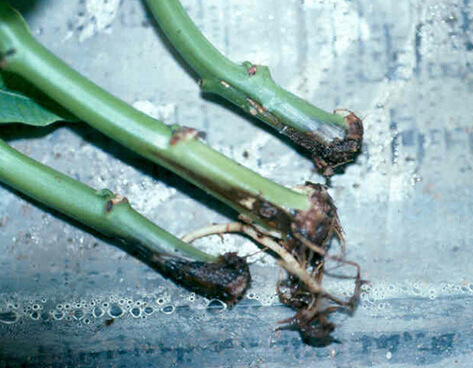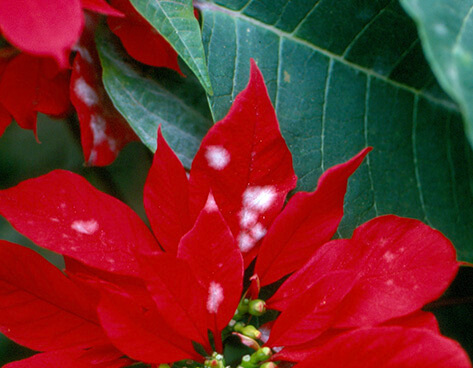Managing Diseases in Poinsettia Production
Disease pressure varies by region in greenhouse poinsettia production, but the most common pathogens include Botrytis, Pythium, Rhizoctonia and powdery mildew. Not as common, but not to be overlooked, are Phytophthora and scab. All of these pathogens can be introduced on contaminated cuttings during propagation, so scouting for diseases should be a top priority from the beginning of poinsettia production.
// Pathogens
Root rot caused by Pythium is the most common disease affecting poinsettia production. Phytophthora and Rhizoctonia can also rot the roots of poinsettias, and under favorable conditions, move upward to affect the stem and lower branches. Botrytis is the primary disease affecting poinsettia stems, leaves and bracts at all stages of production. Cuttings can be contaminated with Sphaceloma poinsettia, the cause of scab or spot anthracnose on both leaves and stems. Powdery mildew is most often a problem under cooler grower conditions.
// Symptoms
- Pythium is usually most serious in early stages of poinsettia production when infected cuttings can wilt and die after transplanting. Plants that survive may be stunted, chlorotic, flower prematurely and drop leaves excessively.
- Botrytis can cause stem dieback and cankers and blight the leaves and bracts of poinsettias. Affected tissues often appear wet and can be covered with gray spores (gray mold) of the fungus.
- Rhizoctonia is critical during propagation under warm to hot conditions ranging from 68 to 86°F. Rhizoctonia forms tan lesions with dark borders on the lower stem and the fungus often girdles and kills the cutting. On older plants, Rhizoctonia can move up into the canopy and rot leaves and branches. Poinsettias are most susceptible during rooting and just prior to plant maturity.
- Phytophthora causes root and stem rot primarily, but the pathogen is capable of causing crown rot and blight of poinsettia. Infections on crowns and stems appear as dark purple to black lesions that quickly enlarge. Lesions on the leaves and bracts appear papery and turn light brown to black in color.
// Cultural ControlPracticing good sanitation is the start to a healthy poinsettia crop. Keep greenhouses floors and walkways weed free which will reduce alternate hosts for pathogens. Adequate drainage to avoid standing water and effective water management is critically important to reduce plant stress and minimize favorable conditions for disease. Use fans and space plants to allow for adequate airflow through the poinsettia canopy. // Chemical ControlPreventive fungicide applications are almost essential under the conditions for poinsettia production. Refer to the Envu recommendation table below for a fungicide management program. |

Stunted and slightly wilted poinsettia plant as a result of Pythium root rot. Photo: A. R. Chase, Chase Horticultural Consulting |
// Disease Management Recommendation for Poinsettia Production


Lower stem decay and lateral root rot from Pythium. |

Powdery mildew on bracts and leaves of poinsettia. |
